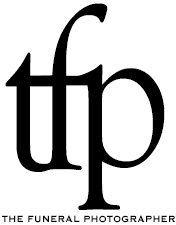Tender portraits are the gift of the dead
The term ‘Funeral photography’ misses the point of what I do since it suggests my profession is inappropriate – for most people death is too confronting to deal with so it makes no sense for them to want it documented/photographed.
So I thought I should explain what I do by how I recently navigated the funeral of a 61 year old woman. When I arrived at the church, all I knew was that my client is her sister, that her mother has dementia and that her father Mike wanted photographs of the funeral.
My lack of knowledge presented a challenge: whilst I try to photograph all mourners, as discussed below, I prefer to focus on key family members. At the funeral, the key family members arrived in a limousine from which emerged two men in their twenties, three teenagers, Mike and two middle aged sisters. When the Church service began I also noted who sat in the front pews and I listened to the eulogy to check my understanding of the family tree.
At the church I photographed unobtrusively, focussing on the emotional journey of each of the key family members. So when Mike entered the church’s vestibule clutching the order of service in his hand with a worried look on his face, I photographed him as his daughter signed the book of condolences in the foreground. Similarly, I photographed one of the sons of the deceased looking on with concern as my client’s daughter entered the vestibule. During the service I photographed my client’s compassionate gaze as she looked at her mother who looked at the portrait of her daughter in the order of service pamphlet.
During the funeral mass my work was guided by the visual scaffolding of the Catholic funeral mass. After the funeral mass, an honour guard of mourners was formed to clap the hearse as it was led from the church by the priest. This final farewell was a beautiful gesture and so I photographed it.
At the wake held in a local surf club I focused on the interpersonal relationships amongst the key family members because their empathy for each other gave rise to beautiful tender portraits. Other mourners were pleased to catch up and reminisce but their grief was insufficient to give rise to empathy.
So I shadowed Mike and marvelled at his kindness – to a sixteen year old grandson in the thrall of awkward adolescence, he sat with him, both of their eyes closed; Mike later remarked to the sixteen year old that he wished he had been his son. The adolescent’s younger brother was troubled and I witnessed his mother affectionately touch his chest with the palm of her hand. Later, his father put his arm around his shoulders. When the woman’s daughter gave her a comforting hug, it was the look of pure love between them after they hugged that was more moving. Later still, even though the parents were divorced, I suggested a family photograph and they agreed.
I also focussed on the two sons of the deceased and photographed them with their father, a way of paying tribute to their mother. I also photographed one of the sons having a quiet moment, clearly thinking of his mother. Later still, I suggested to Mike he might like to have a portrait with all his grandchildren and this idea was embraced to become an extended family portrait of approximately 25 people. To an extent I was disturbing the wake by organising people but I did it quickly and everyone know it was a way of honouring the deceased.
So my photography has two aims. My first aim is to photograph the funeral in such a way as to convey how much person was loved. My second aim is to create tender portraits of people dear to the deceased both by themselves and with others and for me this is what is truly important, this gift of the dead reminding the living of how precious life and love are.


